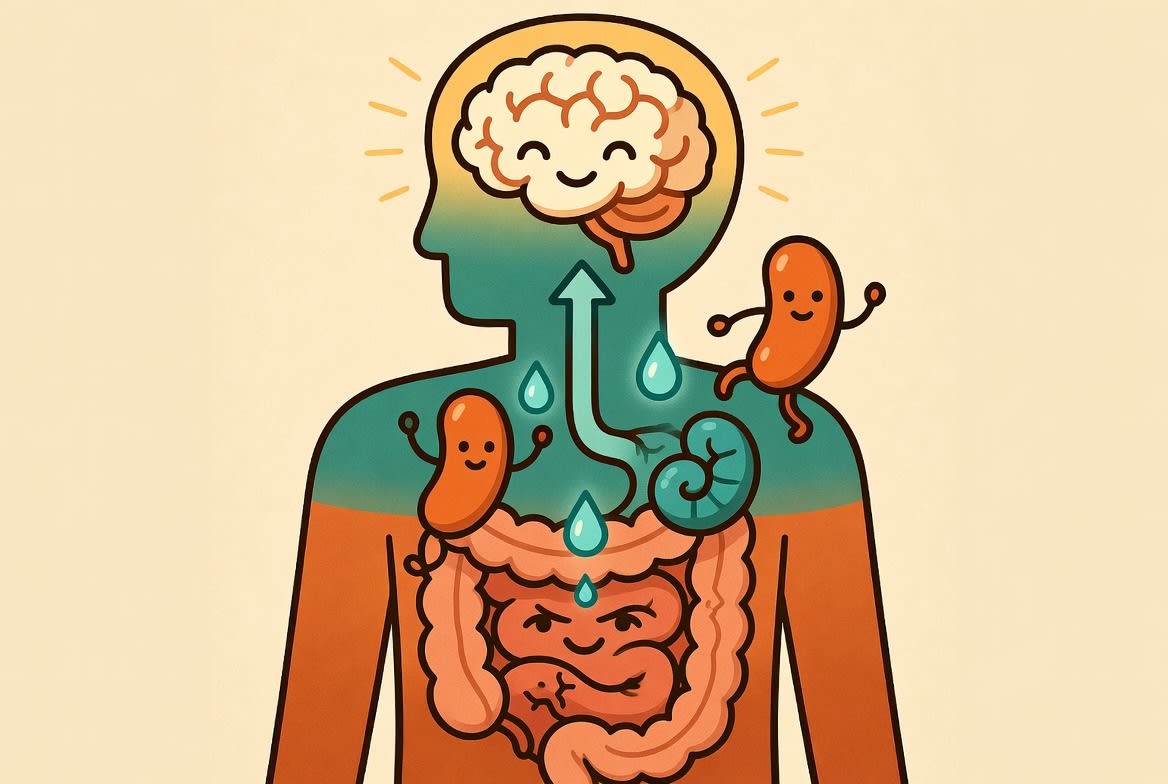Gut Imbalance Ties Kids' Autism, ADHD, and Anorexia to Appetite Hormones
How autism, ADHD, and anorexia nervosa share surprising microbiome patterns—and what that means for appetite, mood, and mental clarity.
I’ve got friends and family on the spectrum, some with that classic “touch of the tism,” and I’m constantly blown away by how much the gut really does act like a second brain. When a new paper drops that looks at autism, ADHD, and anorexia side-by-side through the lens of the microbiome and satiety hormones, you bet I stop scrolling.
“Certain resemblances were observed in the microbiotic taxa abundances across all patient cohorts, underscoring the conceivable influence of gut microbiota composition on the behavioral manifestations of mental disorders.”
What the Big Idea Is
This Slovak study followed 117 kids and teens: 30 boys with autism spectrum disorder (ASD), 14 with ADHD, 21 girls with anorexia nervosa (AN), and 52 healthy controls matched for age and sex. Researchers sequenced their stool samples, measured diversity, looked at specific bacterial phyla and genera, and checked levels of appetite-regulating hormones (PYY, leptin, ghrelin) plus markers of gut permeability and inflammation.
The punchline? All three conditions showed overlapping signs of dysbiosis compared to healthy kids:
Lower microbial richness in ASD and ADHD
Higher Bacteroidetes-to-Firmicutes ratio across the board
More Desulfovibriota in ADHD and AN
More Escherichia-Shigella in ASD and ADHD
Less Faecalibacterium in ADHD and AN
Less Bifidobacterium pretty much everywhere
Firmicutes and Actinobacteriota were the big winners in healthy controls
On the hormone side, PYY (that “I’m full” signal) was lower in ADHD and tanked in anorexia, along with leptin and ghrelin. The bacteria linked to psychopathology tended to correlate negatively with PYY—meaning the worse the microbial picture, the weaker the satiety signal.
Think about that next time a kid (or adult) with ADHD inhales an entire bag of chips without registering fullness, or someone with anorexia still feels empty despite adequate calories. The gut might literally be failing to send the “stop eating” memo to the brain.
Why It Matters and What You Can Do
Your microbiome doesn’t just digest food—it manufactures neurotransmitters, trains your immune system, and talks directly to the vagus nerve and enteroendocrine cells that release appetite hormones. When that conversation goes sideways, behavior can follow.
The shared patterns here are honestly kind of wild. Three very different disorders—one marked by sensory overload and repetitive behavior, one by inattention and impulsivity, one by rigid caloric restriction—yet they all lean toward more Bacteroidetes, less Bifidobacterium, and weaker PYY signaling. That overlap hints at common pathways we could actually target.
A few things that make sense in light of this paper:
Feed the good guys: Bifidobacterium and Faecalibacterium love prebiotic fiber (inulin, resistant starch, polyphenols). Think leeks, onions, garlic, green bananas, cooled potatoes, dark chocolate, berries.
Cut the opportunists: Ultra-processed food and artificial sweeteners tend to favor Escherichia-Shigella and Desulfovibrio. Less junk = happier ecosystem.
Consider targeted probiotics: Strains like Bifidobacterium longum, B. breve, or Lactobacillus reuteri have decent evidence for mood and appetite regulation. (Talk to a doctor, especially with kids.)
Watch the sulfur: Desulfovibriota produce hydrogen sulfide, which can irritate the gut lining. Some people feel dramatically better lowering red meat and cruciferous overload while the gut heals.
Restore PYY signaling: Bitter tastes, soluble fiber, and protein all stimulate PYY release independent of bacteria. A little bitter aperitivo, a high-fiber breakfast, or collagen peptides might help retrain the system.
None of this is medical advice, obviously, but it’s food for thought (pun intended).
What’s Next on the Horizon
Larger longitudinal studies are desperately needed—this one got hammered by COVID and ended up smaller than ideal. We also need trials that deliberately shift these specific taxa (via diet, prebiotics, probiotics, or even fecal transplants) and track both microbiome changes and clinical symptoms over months or years.
The satiety hormone link is especially intriguing. If we can raise PYY naturally in ADHD or anorexia through microbial interventions, we might ease binge tendencies or the terrifying drive to restrict. And for autism? Well, anything that calms GI distress and improves signaling to the brain is worth exploring.
Safety, Ethics, and Caveats
Sample size is the glaring limitation here—only 14 kids with ADHD and 21 with anorexia. Age and sex weren’t perfectly balanced across groups, and diet wasn’t tightly controlled. Inflammation markers like calprotectin and zonulin came back normal, which argues against a classic “leaky gut” story in these Slovak kids, though that could be population-specific.
Also, correlation isn’t causation. We don’t know if the microbial shifts cause the disorders, result from them (different eating patterns, stress, medication), or simply ride along with some third factor.
Still, the overlap across three distinct conditions is hard to dismiss as noise.
One Last Thing
Your gut bugs aren’t just along for the ride—they're active participants in how hungry you feel, how impulsive you act, and even how overwhelmed the world seems. Feeding them well might be one of the kindest things you can do for a brain that’s already working overtime.
Explore the Full Study
Soltysova, M., Tomova, A., Paulinyova, M., Lakatosova, S., Trebaticka, J., & Ostatnikova, D. (2025). Gut microbiota in children and adolescents with autism, ADHD and anorexia nervosa, and its link to the levels of satiety hormones. Neuroscience, 585, 394–407.
https://doi.org/10.1016/j.neuroscience.2025.08.020


